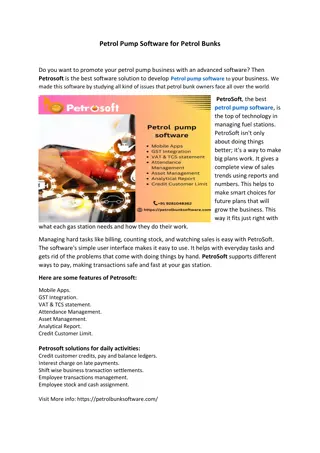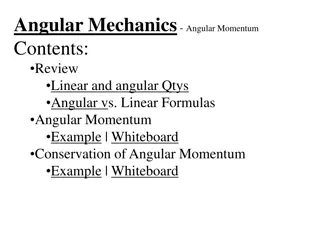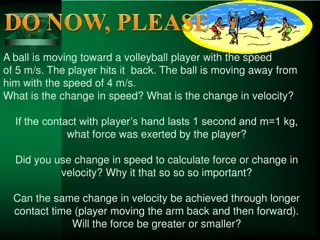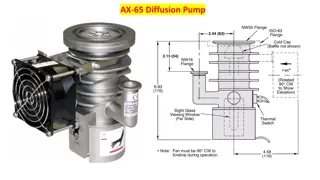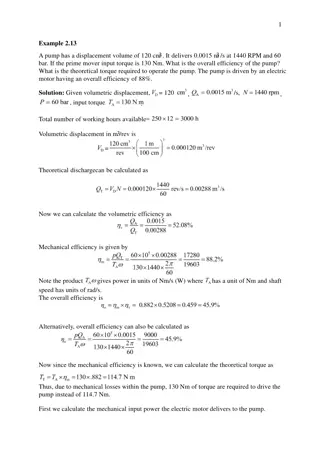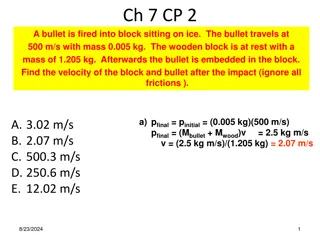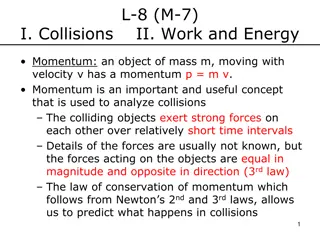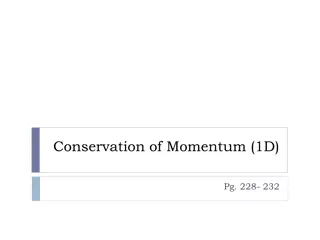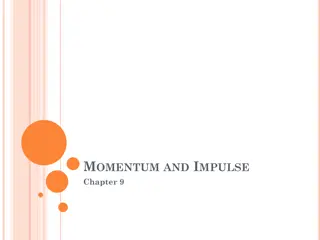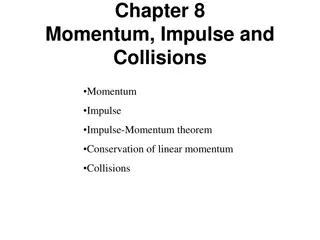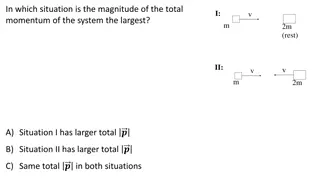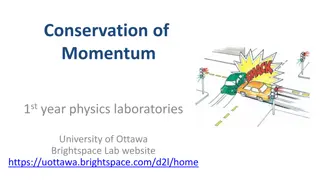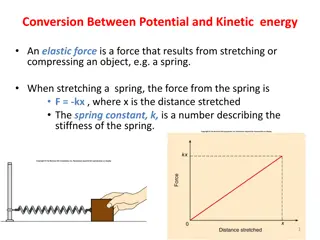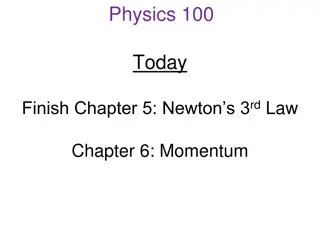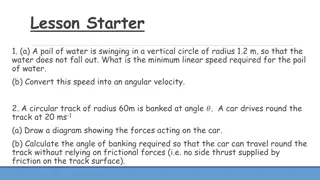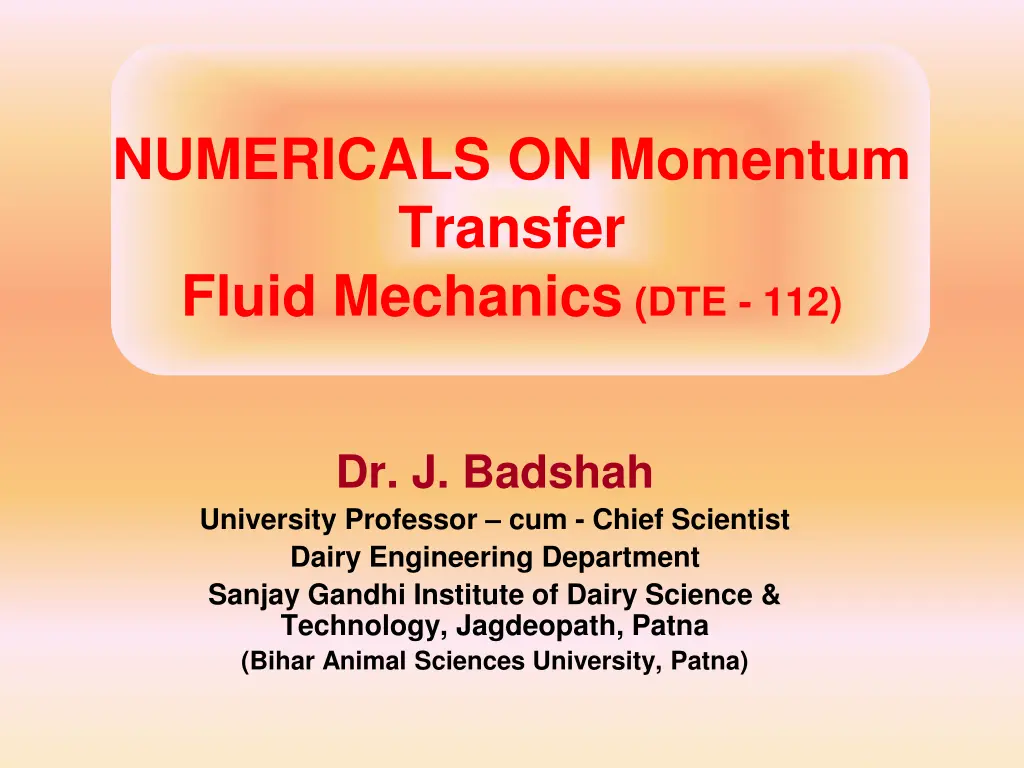
Fluid Mechanics Numericals on Momentum Transfer and Pumps & Fans
Explore practical examples in fluid mechanics involving momentum transfer, pressure calculations, and pump/fan performance adjustments for optimal operation.
Uploaded on | 1 Views
Download Presentation

Please find below an Image/Link to download the presentation.
The content on the website is provided AS IS for your information and personal use only. It may not be sold, licensed, or shared on other websites without obtaining consent from the author. If you encounter any issues during the download, it is possible that the publisher has removed the file from their server.
You are allowed to download the files provided on this website for personal or commercial use, subject to the condition that they are used lawfully. All files are the property of their respective owners.
The content on the website is provided AS IS for your information and personal use only. It may not be sold, licensed, or shared on other websites without obtaining consent from the author.
E N D
Presentation Transcript
NUMERICALS ON Momentum Transfer Fluid Mechanics (DTE - 112) Dr. J. Badshah University Professor cum - Chief Scientist Dairy Engineering Department Sanjay Gandhi Institute of Dairy Science & Technology, Jagdeopath, Patna (Bihar Animal Sciences University, Patna)
Numericals on Momentum Transfer Water flows at the rate of 0.4 m3/ min in a 7.5 cm diameter pipe at a pressure of 70 kPa. If the pipe reduces to 4 cm diameter, then calculate the new pressure the new pressure in the pipe. The density of water is 100 kg/m3. Calculate A1= /4 (0.075)2= 4.42 x 10-3m2 A2= /4 (0.04)2= 1.26 x 10-3m2 Discharge Q = 0.4 m3/min = 6.67 x 10-3m3/sec V1= Q/A1= 1.51 m/s and V2= 5.3 m/s Applying Bernoulli s Theorem: P1/ g + v12/2g +z1= P2/ g + V22/2g + z2 Therefore, P2= 70 + 1000/2 (1.512- 5.32) = 57.1 KPa
Numerical A fluid having density of 1030 kg/m3, viscosity of 1 cp flows through a horizontal pipe of diameter 5 cm and 100 m long. If velocity of flow inside the pipe is 1 cm/s and the flow regime is laminar, find the pressure drop in the pipeline in pascal. What would be pressure drop in pascal if the diameter of the pipe is halved. Solution: Viscosity of fluid = 1 cp = 10-3 Ns/m2 P = 32 l v/ d2 = 32 x 1 0-3 100 x .01/ 0.05 2 = 12.8 Pa P 1/ d2 Therefore, P2 / P1= ( d1 P2 = 4 x P1= 4 x 12.8 = 51.2 Pascal. 2 / d2 2 ) = (2)2
Numericals on Pumps and Fans In a centrifugal pumps, if the speed is increased from 1750 rpm to 200 rpm, then calculate the change in head from 50 m. Solution : For same impeller Diameter: H N2 H2= H1(N2/N1)2= 50 x (2000/1750)2= 65.3 m A liquid food is being pumped through 3.5 cm diameter 50 m long pipe at a flow rate of 200 litre per minute. What pressure would be generated at a discharge of the pump if the end of pipe is at atmospheric pressure? The viscosity of food = 0.1 Pasecond and density is 1020 kg/m3. Solution: Velocity = (Q/A ) = 0.2 / /4 ( 0.035)2= 3.46 m/s Reynolds Number NRe= d v / = 1020 x 0.035 x 3.46/ 0.1 Reynolds Number NRe= 1237 Therefore Nre < 2100 and Flow is laminar. Discharge Q = P r4/ 8 l and P =8 l Q/ r4= 452.52 KPa
Numerical A fan having an impeller dia. 35 cm delivers 3 m3/ min of air at a static pressure of 5 cm water when speed is 500 rpm and a power input of 4.5 KW. What will be (a) the speed and static pressure if the same fan is made to deliver 4.5 m3/ min? (b) The percentage increase in power to run the fan at this increased speed. (c ) The new fan size to deliver 4.5 m3/min if the speed is not allowed to deviate from 500 rpm? Solution: Given D1=0.35 m, Q1 = 3 m3/ min, P1 = 4.5 KW and N1= 500 rpm, Q2 = 4.5 m3/ min (i) Keeping the impeller same, we have: Q1/Q2= N1/N2 H1/H2= (N1/N2)2and P1/P2= (N1/N2)3 Therefore N2= N1Q2/Q1= 500 x4.5 /3 = 750 rpm And H2= 5 x(750/500)2 = 11.25 m and P2= P1(N2/N1)3
Numerical Percentage Increase in Power = (P2 P 1)/ P1 Percentage Increase in Power = [(N2/N1)3 P1 P1]/P1 Percentage Increase in Power = (750/500)2 -1 = 2.375= 237.5% (ii) Keeping N constant, we may write : Q D3 Q1/Q2= (D1/D2)3 D2= (Q2/Q1) 1/3x D1 = (4.5/3)1/3x 0.35 = 0.4 m



